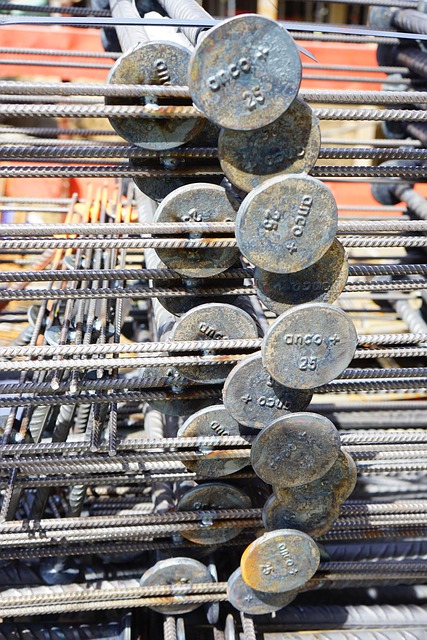Industrial steel structure drafting demands strict adherence to safety standards for stairways, focusing on robust materials, durable handrails & ladders, secure fastening, slip-resistant surfaces, and compliance with building codes. Skilled drafters ensure precise measurements for handrail height, step dimensions, and ladder rungs, enhancing accessibility and preventing accidents.
In any environment, ensuring safe navigation through staircases, handrails, and ladders is paramount. This comprehensive guide delves into the critical aspects of stairway safety compliance, offering a detailed look at industry standards and best practices. From understanding essential safety requirements for handrails to the meticulous design considerations for ladders, we explore how industrial steel structure drafting can create robust, secure environments. By adhering to these guidelines, facilities can mitigate risks and foster a culture of safety.
Understanding Safety Standards for Stairways
Navigating safety standards for stairways is paramount in any construction or renovation project, especially when dealing with industrial steel structures. Professional drafters and engineers must adhere to stringent guidelines to ensure the integrity and stability of these essential components. The primary focus lies in utilizing appropriate materials like robust industrial steel, meticulously designing handrails and ladders to withstand significant weight and wear, and implementing secure fastening methods.
Understanding these standards involves delving into specific codes and regulations, such as those set by local building departments or international organizations. Incorporating features like slip-resistant surfaces on stair treads, adequate headroom clearance, and well-spaced handrail supports not only enhances safety but also ensures compliance with industry best practices in industrial steel structure drafting.
Handrail Requirements: A Comprehensive Guide
Handrails are an essential safety feature in any industrial setting, especially for staircases and elevated platforms. According to occupational health and safety regulations, handrails must meet specific requirements to ensure the well-being of employees and visitors. When it comes to industrial steel structure drafting, proper handrail installation is crucial.
In terms of design, handrails should be securely fastened to the structure, providing a firm grip for users. The height and reach of the handrail must adhere to standards, typically around 80-95 cm from the walking surface, allowing easy access while preventing falls. Material-wise, industrial steel structures often use sturdy metal handrails, ensuring longevity and minimal maintenance. This comprehensive guide emphasizes the vital role of handrails in accident prevention, making them a critical component in any industrial steel structure drafting project.
Ladder Design: Ensuring Stability and Compliance
Ladder design plays a critical role in ensuring safety compliance, especially in industrial settings where stability and strength are paramount. When crafting or selecting ladders for an industrial steel structure drafting project, several factors come into play. The ladder’s structure should be robust enough to withstand frequent use and the weight it supports, with robust rungs and side rails made from high-quality materials like industrial-grade steel.
Proper spacing between rungs is essential for stability and comfort, preventing fatigue during extended use. Non-slip surfaces on the rungs and feet further enhance safety by reducing the risk of accidents caused by slippery conditions. Compliance with industry standards, such as those outlined in relevant building codes or occupational health regulations, ensures that the ladder design meets the necessary criteria for structural integrity and user protection.
Industrial Steel Structure Drafting for Safe Environments
In industrial settings, ensuring safety through meticulous planning and structured design is paramount, especially when considering staircases, handrails, and ladders. Industrial steel structure drafting plays a pivotal role in creating safe environments by translating complex safety requirements into tangible designs. This process involves carefully detailing every aspect, from the angle of inclines to the placement of supports, all while adhering to stringent regulatory standards.
A skilled drafter ensures that each component, such as handrail height and spacing, step dimensions, and ladder rungs, is precisely measured and specified. Proper drafting not only enhances accessibility for workers but also prevents accidents by providing clear visual guidelines. By integrating safety considerations into the initial design phase, industrial steel structure drafting fosters a robust framework that contributes to overall workplace well-being.
In ensuring safe environments, especially in industrial settings, adhering to safety standards for stairways, handrails, and ladders is paramount. This article has delved into these crucial components, offering comprehensive guides on handrail requirements and ladder design stability. Moreover, the discussion on industrial steel structure drafting underscores the importance of meticulous planning in creating robust and compliant environments. By implementing these detailed practices, we can foster safer work spaces, reducing risks and promoting productivity.
